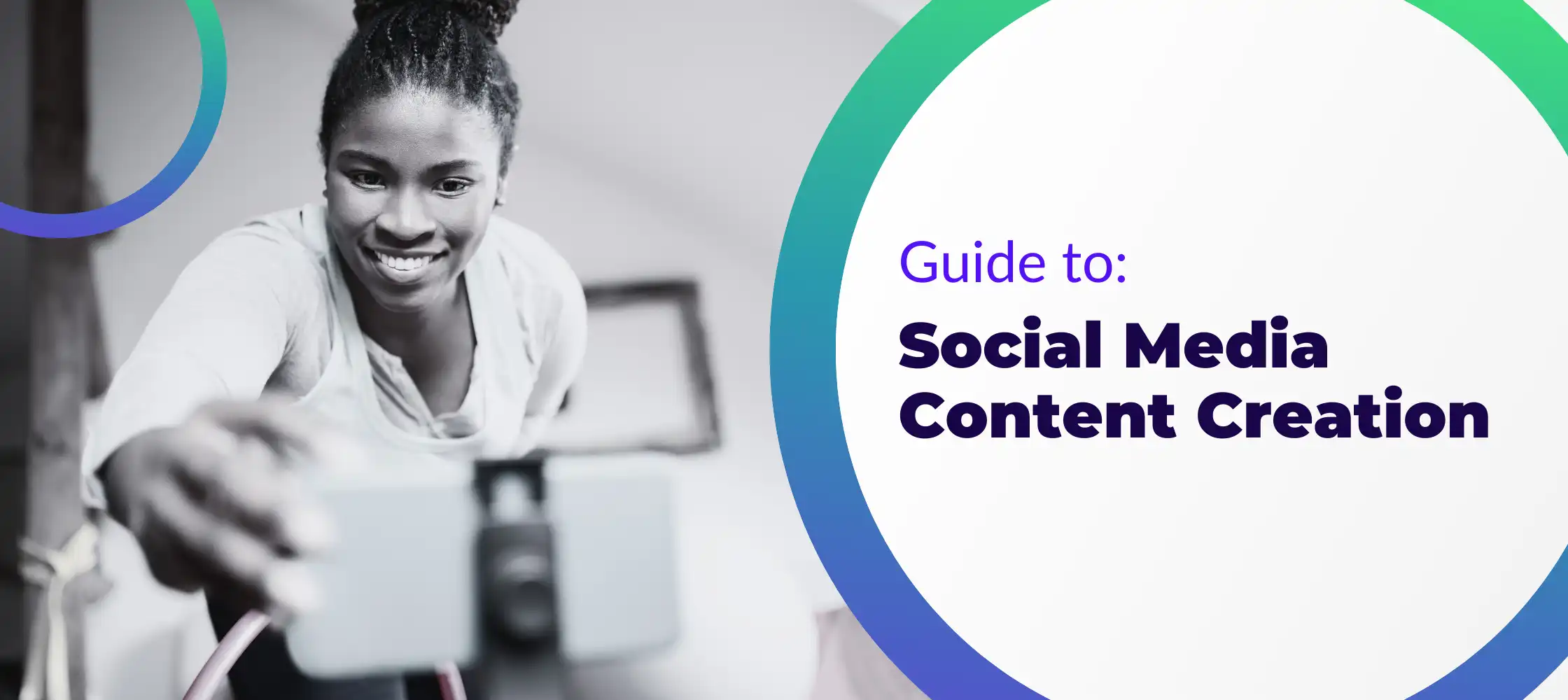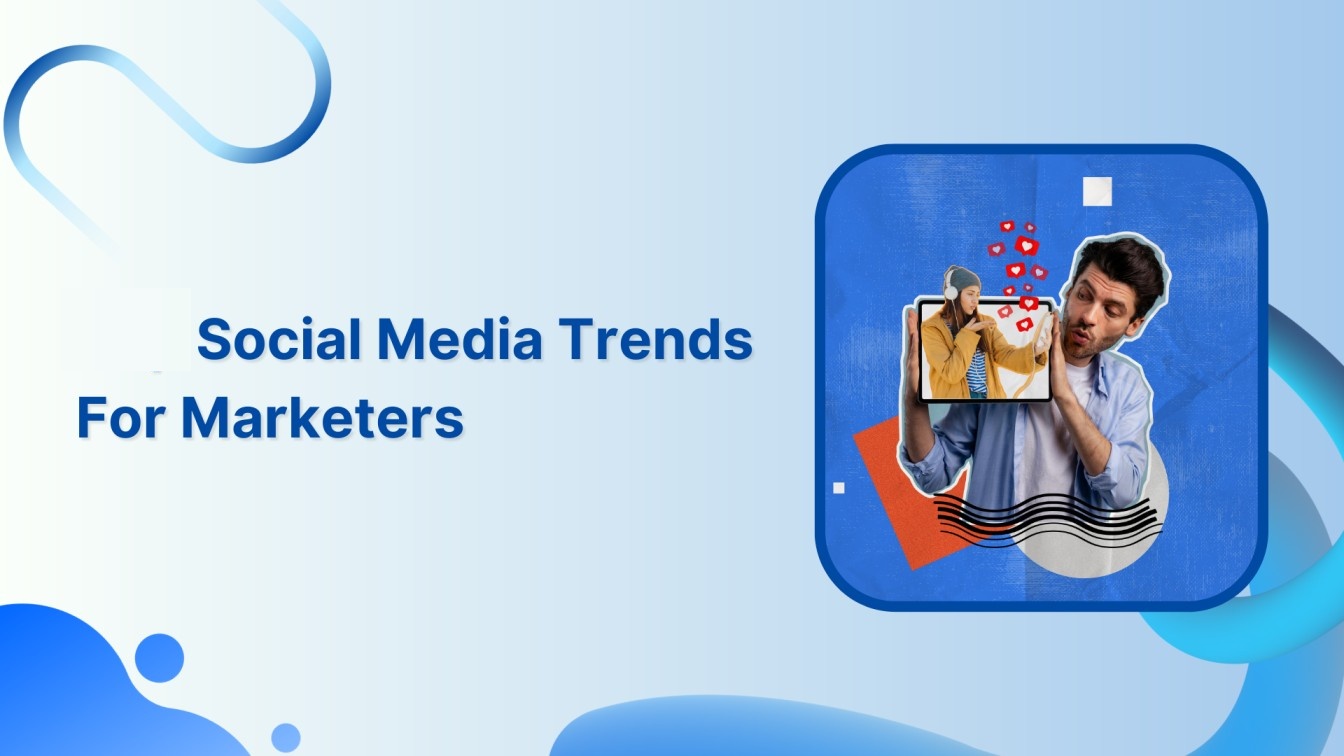How To Create Social Media Content In 2025? [Expert Tips Inside]
Learn how to create effective social media content in 2025 with our expert tips and proven strategies to engage your audience and boost brand visibility.
![How To Create Social Media Content In 2025? [Expert Tips Inside]](https://www.dailyhawker.com/wp-content/uploads/2025/03/110f5dedf8c5a2e1/how-to-create-social-media-content-in-2024.jpeg)
Feb 17, 2025
Creating effective social media strategies can be overwhelming, especially for brands just starting to build their online presence. With numerous channels, features, and tools available, it can be challenging to fit everything into a cohesive marketing plan. The success of your online efforts relies on having a sensible and straightforward strategy tailored to your resources and goals.
1. What Is Social Media Content Creation?
Social media content creation involves developing compelling posts, videos, graphics, and other media formats tailored for platforms like Instagram, X (formerly Twitter), LinkedIn, and TikTok.
However, simply posting on social media isn’t enough you need to create content that truly resonates with your audience. Effective content creation is about providing value, sparking engagement, and building connections.
The best content captures attention, tells a story, or answers questions, fostering deeper relationships between brands and their followers.
A great example is Spotify’s Wrapped campaign, which personalizes user data into shareable, engaging content, making it highly relatable and interactive.
Key Aspects Of Social Media Content Creation:
- Creativity: Define your objectives (brand awareness, engagement, or sales) and craft content that aligns with them.
- Strategy: Understand your audience’s interests, challenges, and behaviors to create content that resonates.
- Consistency: Maintain a regular posting schedule to stay visible, credible, and relevant.
- Engaging Visuals: Use high-quality, platform-optimized images and videos to capture attention and drive interaction.
- Data-Driven Approach: Analyze insights to refine content strategies and focus on what delivers real results.
- Branding & Uniformity: Maintain a consistent tone, style, and branding to enhance recognition and trust.
At its core, social media content creation combines creativity with strategic intent, helping brands stand out and make a lasting impact. Now, let’s explore the trending types of social media content in 2025.
2. Defining Your Goals
Establishing clear goals is the first step in developing an effective social media content strategy. Goals should be SMART Specific, Measurable, Achievable, Relevant, and Time-bound.
- Increasing Brand Awareness: Aim to boost followers, likes, and shares.
- Driving Website Traffic: Monitor click-through rates from social media to your site.
- Enhancing Customer Engagement: Encourage comments, shares, and interactions.
- Generating Leads: Track inquiries and sign-ups originating from social channels.
Quick Checklist For Goal Setting:
- Are your goals specific?
- Are they measurable?
- Are they achievable?
- Are they relevant to your overall strategy?
- Do they have a clear timeframe?
A well-defined goal provides a roadmap for your content strategy, enabling you to measure success and make data-driven decisions.
According to HubSpot's State of Social Media Report, setting clear goals equips brands to track performance and adjust tactics over time.
3. Understanding Your Audience
Knowing your audience is crucial for creating content that resonates. Conduct comprehensive research to identify demographics, interests, and behaviors.
Understanding your audience's motivations whether they seek entertainment, education, or social connections helps you tailor your messaging and content formats effectively.
Tools For Audience Research:
- Social Listening Tools: Monitor conversations about your brand and industry.
- Surveys and Polls: Gather direct feedback from your audience.
- Analytics: Use platform analytics to gain insights into user behavior.
Quick Checklist For Audience Understanding:
- Have you created detailed buyer personas?
- Are you aware of your audience’s preferred platforms?
- Do you know their interests and challenges?
According to recent consumer behavior surveys, 41% of users prefer to research new products on social media, making audience understanding vital.
4. Analyzing Competitors
Analyzing your competitors is essential for understanding the landscape and identifying opportunities. Conduct a competitive analysis to uncover effective strategies and content formats your rivals are using.
Tools like Sprinklr and HubSpot can help you benchmark performance and discover successful content types.
Steps For Competitive Analysis:
- Identify your key competitors.
- Analyze their content strategy (frequency, format, engagement).
- Identify their strengths and weaknesses.
- Look for gaps in their strategy that you can exploit.
Quick Checklist For Competitor Analysis:
- Have you identified your main competitors?
- Are you tracking their engagement metrics?
- Have you noted their content types and formats?
Insights from competitors can inform your strategy and help you stand out in a crowded marketplace.
See Also: When Is The Best Time To Post On LinkedIn?
5. Current Trends In Social Media Content
key trends are shaping how brands connect with audiences:
- AI Content Creation: Automation can enhance efficiency in content production.
- Community Building: Brands that foster communities see higher engagement and loyalty.
- Social Media Shopping: More consumers are purchasing products directly through social channels.
Examples Of Brands Leveraging Trends:
- Nike: Uses AI for personalized ads and engages communities through motivational storytelling.
- Wendy’s: Capitalizes on humor and relatability to connect with audiences, especially through Twitter.
Quick Checklist For Trend Awareness:
- Are you staying updated on industry trends?
- Do you have strategies to adapt your content to current trends?
- Are you engaging with emerging platforms?
Brands like Nike and Wendy’s exemplify the power of these trends through engaging and relatable content that resonates with their audiences.
6. The Content Creation Process
The content creation process is a systematic approach that involves several key stages:
- Planning and Research: Identify your target audience, goals, and content types.
- Ideation: Brainstorm ideas and concepts that align with your strategy.
- Creation: Develop content, whether it’s writing, designing, or producing multimedia assets.
- Editing and Reviewing: Ensure quality and accuracy through thorough editing.
- Distribution and Promotion: Implement strategies to effectively reach your audience.
This iterative process allows for continuous analysis and refinement, optimizing results and delivering impactful content.
Quick Checklist For Content Creation:
- Do you have a clear plan and timeline?
- Are your ideas aligned with audience interests?
- Is there a review process for quality assurance?
7. Reviewing Current Social Content
Conduct a content audit to assess the performance of your existing social media posts. Analyze which posts garnered the most engagement and which fell flat.
This audit will guide your content creation moving forward, allowing you to replicate successes and learn from failures.
Steps For Conducting A Content Audit:
- Gather data on existing posts.
- Evaluate performance metrics (likes, shares, comments).
- Identify high-performing content and analyze its characteristics.
- Make adjustments based on findings.
Quick Checklist For Content Audit:
- Have you collected data on all social posts?
- Are you evaluating posts across all platforms?
- Have you documented successful content characteristics?
Regular reviews help you stay aligned with your goals and adapt to changing audience preferences.
8. Crafting Engaging Content
To create engaging content, focus on key elements such as storytelling and visual appeal. Use high-quality visuals and videos that capture attention and foster connections with your audience.
Experiment with various formats text, images, videos, and polls to keep your content dynamic and interesting.
Tips For Enhancing Creativity:
- Incorporate User-Generated Content: This fosters community and authenticity.
- Leverage Visuals: Infographics and videos often drive higher engagement.
- Utilize Storytelling: Share customer stories or brand journeys to create emotional connections.
Quick Checklist For Engaging Content:
- Are you using a mix of content formats?
- Is your content visually appealing?
- Are you telling compelling stories?
9. Choosing Content Types And Formats
Diversifying your content types is crucial for maintaining audience interest.
- Text-based contentfor storytelling.
- Visuals and videosfor high engagement.
- Infographicsfor visually appealing information.
- User-generated contentto foster community involvement.
Use data analysis to determine which formats resonate most with your audience, and adjust your strategy accordingly.
Quick Checklist For Content Types:
- Are you exploring different content formats?
- Are you analyzing performance data for each format?
- Is your content aligned with audience preferences?
You Might Like: Types Of Instagram Accounts - Which One Is Right For You?
10. Utilizing Social Media Tools And Features
Implement social media management tools for efficient scheduling and analytics tracking. Tools like Hootsuite and Sprout Social allow you to manage multiple accounts, schedule posts, and analyze performance from a single dashboard.
Utilize platform-specific features, such as Instagram Stories or Facebook Live, to enhance engagement.
Recommended Tools:
- Hootsuite: For scheduling and management across platforms.
- Sprout Social: For in-depth analytics and reporting.
- Canva: For creating visually appealing graphics.
Quick Checklist For Tool Utilization:
- Are you using social media management tools?
- Have you explored platform-specific features?
- Are you analyzing your content's performance regularly?
11. Building Your Content Calendar
A content calendar helps you maintain a consistent posting schedule and organize your strategy effectively. Include key topics, themes, and posting frequencies to ensure diverse and engaging content.
A well-structured calendar also facilitates better collaboration and resource allocation among your team.
Steps To Create A Content Calendar:
- Determine your posting frequency.
- Plan themes for each week/month.
- Allocate content types to specific days.
- Use a shared platform for team collaboration.
Quick Checklist For Content Calendar:
- Is your content calendar well-organized?
- Are all team members aware of their responsibilities?
- Is there flexibility for timely content updates?
12. Promoting And Sharing Content
Promoting your content actively boosts visibility and engagement.
- Scheduling Posts: Automate your posting for optimal times.
- Encouraging Shares: Engage with followers and ask them to share your content.
- Collaboration: Work with other brands or influencers to extend your reach.
Establishing a solid promotional plan will maximize the impact of your content.
Quick Checklist For Content Promotion:
- Are you scheduling posts for peak times?
- Are you encouraging followers to share your content?
- Have you reached out for collaborations?
13. Measuring Success And Adjusting Strategies
Regularly Measure Key Performance Indicators (KPIs) Like Engagement Rates, Click-through Rates, And Conversions. Use Analytics Tools Provided By Social Platforms To Evaluate Your Content’s Effectiveness.
Adjust your strategies based on insights gained to continuously improve your approach.
Key Metrics To Track:
- Engagement Rate: Likes, comments, and shares.
- Click-Through Rate (CTR): Percentage of users who clicked on links.
- Conversion Rate: Percentage of users completing desired actions.
Quick Checklist For Measuring Success:
- Are you tracking KPIs consistently?
- Do you adjust strategies based on data?
- Are you setting new goals based on performance metrics?
14. Common Mistakes To Avoid
Avoid pitfalls such as neglecting audience engagement, overloading promotional content, and being inconsistent in posting.
Establish a regular schedule and a balanced content mix to keep your audience engaged.
Common Mistakes:
- Ignoring Analytics: Failing to use data to inform decisions.
- Inconsistent Posting: Irregular schedules can disengage audiences.
- Too Much Self-Promotion: Focus on providing value over constant selling.
Quick Checklist For Avoiding Mistakes:
- Are you regularly reviewing analytics?
- Is your posting schedule consistent?
- Are you balancing promotional content with value-driven posts?
15. Case Studies: Brands Excelling In Social Media
Wendy’s
Wendy’s employs a bold and humorous tone, engaging followers through witty banter and timely pop culture references. Their strategy includes jumping on trending topics and leveraging user-generated content, resulting in increased engagement and brand loyalty.
Metrics: Wendy's gained significant followers and engagement through their #NuggsForCarter campaign, showcasing the power of relatability and humor.
Nike
Nike’s approach centers around storytelling, utilizing compelling campaigns and collaborations with top athletes to connect emotionally with audiences.
Metrics: Campaigns like "Just Do It" have driven massive engagement, with millions of shares and interactions across social media platforms.
GoPro
GoPro encourages users to share their adventurous experiences, creating a dedicated community of content creators and brand advocates.
Metrics: User-generated content has resulted in thousands of shares, showcasing the effectiveness of community engagement.
Airbnb
Airbnb fosters a sense of belonging by promoting unique accommodations through user-generated content, connecting emotionally with their audience.
Metrics: The brand's posts receive high engagement rates, leading to increased bookings and brand loyalty.
Glossier
Glossier builds its brand around user-generated content and community involvement, emphasizing transparency and inclusivity.
Metrics: The brand has seen exponential growth through its community-driven approach, establishing a loyal customer base.
FAQs About How To Create Social Media Content
What Types Of Content Work Best On Social Media?
Short-form videos, interactive posts, and user-generated content tend to perform well across platforms.
How Often Should I Post On Social Media?
Aim for a consistent posting frequency, typically 3-5 times a week, depending on the platform.
How Can I Measure The Success Of My Social Media Content?
Utilize analytics tools to track engagement rates, reach, and conversion metrics, adjusting strategies based on performance.
Conclusion
Creating an effective social media content strategy requires a comprehensive understanding of your audience, a keen awareness of current trends, and a commitment to crafting engaging, optimized content.
Brands can navigate the complex social media landscape with confidence and creativity. Embracing innovation and remaining adaptable will ensure that your content not only reaches but also resonates with your target audience.
Read Also: Owned Content - Harness The Power Of The Content You Create






